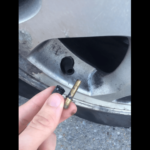The Italian tune-up is a term that refers to a method of revving up an engine to high RPMs and load to clear out any carbon deposits and gunk. The term originated from Italian mechanics in the 1950s, who used this practice to burn off carbon deposits from the spark plugs of sports cars.
The idea behind the Italian tune-up is to get the engine hot enough to burn off any built-up deposits, which can cause performance issues.
While the Italian tune-up may seem like a quick fix for engine problems, it is not a guaranteed solution. It is essential to note that the Italian tune-up is not a replacement for regular maintenance.
A well-maintained engine is less likely to develop carbon deposits, and regular oil changes can help keep the engine running smoothly. However, if you have an older car or have not maintained your engine correctly, an Italian tune-up may be a useful tool to keep your engine running smoothly.
Understanding Italian Tune-Up

According to Road and Track (.com), Italian Tune-Up is a term used to describe a driving technique that involves revving the engine of a car to high RPMs in order to remove any harmful carbon deposits that may have accumulated in the engine.
This technique is often used on older cars that have been driven for a long time and have not been serviced regularly.
The Italian Tune-Up technique works by heating up the engine to a high temperature, which then burns off any carbon deposits that may have accumulated in the engine. This technique is often used as a quick fix for cars that are not running properly, but it is not a long-term solution.
It is important to note that the Italian Tune-Up technique should only be used on cars that are well-maintained and have no underlying mechanical issues. Using this technique on a poorly maintained car can cause more harm than good.
Engineering experts recommend that car owners should follow a regular maintenance schedule to keep their cars in good running condition. Regular maintenance includes changing the oil, replacing filters, and checking the spark plugs.
In conclusion, the Italian Tune-Up technique is a quick fix for cars that are not running properly, but it is not a long-term solution. Car owners should follow a regular maintenance schedule to keep their cars in good running condition.
The Process of Italian Tune-Up
Italian Tune-Up is a process that involves driving a car hard to remove carbon deposits and gunk from the engine. This process is also known as hitting the redline. Here is a breakdown of the Italian Tune-Up process:
Reaching the Redline
The first step in the Italian Tune-Up process is reaching the redline. The redline is the maximum engine speed that a car can safely reach. It is usually indicated on the tachometer with a red line. To reach the redline, the driver needs to shift the car into a lower gear and accelerate quickly.
Operating Temperature
The second step in the Italian Tune-Up process is to ensure that the car is at its operating temperature. This is important because the engine needs to be at its optimal temperature to burn off carbon deposits and gunk.
The driver should drive the car normally for a few minutes before starting the Italian Tune-Up process.
Highway Running
The final step in the Italian Tune-Up process is to drive the car on the highway. This is important because the car needs to be driven at high speeds for an extended period to burn off carbon deposits and gunk.
The driver should maintain a high speed for at least 20 minutes to ensure that the car is properly cleaned.
During the Italian Tune-Up process, the driver should pay attention to the RPM of the car. The car should be driven at high RPMs for an extended period to ensure that the engine is properly cleaned.
It is important to note that the Italian Tune-Up process should only be done on a well-maintained engine. If the engine is not well-maintained, the Italian Tune-Up process can cause damage.
In conclusion, the Italian Tune-Up process is a process that involves driving a car hard to remove carbon deposits and gunk from the engine.
The process involves reaching the redline, ensuring that the car is at its operating temperature, and driving the car on the highway. The process should only be done on a well-maintained engine to avoid damage.
Effects on Engine Performance

The Italian tune-up technique has been used by car enthusiasts for decades to improve engine performance. This technique involves driving the car at high speeds and elevated RPMs to remove carbon deposits that can accumulate within an engine and its exhaust system.
The Italian tune-up technique has two main effects on engine performance, which are discussed below.
Carbon Deposit Removal
Carbon deposits can accumulate in the engine and exhaust system over time, leading to a reduction in engine performance. These deposits can cause a variety of problems, including reduced fuel efficiency, decreased power output, and increased emissions.
The Italian tune-up technique can help remove these carbon deposits by burning them off at high speeds and elevated RPMs.
According to a Road & Track article, running a car at high loads can increase the chance of carbon deposits forming. However, the Italian tune-up technique can help remove these deposits, resulting in improved engine performance.
Spark Plugs Functionality
Another effect of the Italian tune-up technique is improved functionality of spark plugs. Spark plugs play a critical role in the combustion process by igniting the fuel and air mixture in the engine.
Over time, spark plugs can become fouled with carbon deposits, leading to misfires and reduced engine performance.
The Italian tune-up technique can help remove these carbon deposits from spark plugs by burning them off at high speeds and elevated RPMs. This can help improve the functionality of spark plugs, resulting in improved engine performance.
In summary, the Italian tune-up technique can have a positive effect on engine performance by removing carbon deposits from the engine and exhaust system, as well as improving the functionality of spark plugs.
However, it is important to note that this technique should only be used on well-maintained engines and should not be used as a substitute for regular maintenance.
Potential Risks and Precautions
Italian tune-up is a technique that involves revving the engine to high RPMs to remove carbon build-up and other deposits. While it can be an effective way to clean out the engine, there are some potential risks and precautions that drivers should be aware of.
Engine Failure Risks
As per one Quora user, one of the biggest risks associated with Italian tune-up is the potential for engine failure. Revving the engine to high RPMs can put a lot of stress on the engine components, which can cause them to wear out faster than normal.
If the engine is not well-maintained or if there are existing problems with the engine, the stress of an Italian tune-up could cause significant damage.
To minimize the risk of engine failure, it is important to make sure that the engine is in good condition before attempting an Italian tune-up.
This means checking the oil and other fluids, inspecting the spark plugs and other ignition components, and ensuring that the air filter is clean and functioning properly.
Catalytic Converter Damage
Another potential risk associated with Italian tune-up is damage to the catalytic converter. The catalytic converter is responsible for reducing harmful emissions from the engine, and it can be damaged if the engine is revved too high for too long.
To minimize the risk of catalytic converter damage, it is important to avoid revving the engine for too long during an Italian tune-up. It is also important to make sure that the catalytic converter is functioning properly before attempting an Italian tune-up.
Overall, Italian tune-up can be an effective way to clean out the engine and improve performance, but it is important to take precautions to minimize the risk of damage to the engine and other components.
By following these precautions, drivers can safely perform an Italian tune-up and enjoy the benefits of a cleaner, more efficient engine.
Alternative Solutions

Fuel Additives
In addition to the Italian Tune-Up method, there are several fuel additives available in the market that claim to clean the engine and remove carbon deposits. These additives are usually poured into the gas tank and mixed with the fuel.
They work by breaking down the deposits and allowing them to be burned off during normal engine operation.
However, the effectiveness of these additives is a subject of debate among experts. Some claim that they are effective in removing deposits, while others argue that they are not necessary and may even harm the engine in the long run.
It is important to research and choose a reputable brand before using any fuel additives.
Car Reviews
One way to prevent carbon buildup in the engine is to choose a car that is known for its clean-burning engine. Car reviews can be a helpful resource in this regard. Experts test and evaluate cars for their fuel efficiency, emissions, and overall performance.
When looking for a car that is less prone to carbon buildup, it is important to consider factors such as the type of engine, fuel efficiency, and the manufacturer’s reputation for producing clean-burning engines.
Car reviews can also provide insight into the maintenance requirements of different models. Regular maintenance, such as oil changes and air filter replacements, can help prevent carbon buildup in the engine.
From my experience as a mechanic, I can affirm that the Italian Tune-Up method is indeed a popular and effective way to address carbon buildup in engines. However, it’s essential to note that there are alternative solutions to consider.
Utilizing fuel additives and conducting thorough research before purchasing a car can go a long way in both preventing and eliminating carbon buildup issues.
To Summarize
In summary, an Italian tune-up involves driving a car hard and bringing it to redline with the goal of flushing out any deposits or gunk. This practice is believed to restore engine performance by burning off carbon deposits from the spark plugs of sports cars.
The term originated from Italian mechanics in the 1950s who used this practice to improve the performance of sports cars.
While the Italian tune-up can be effective in restoring engine performance, it should only be done on well-maintained engines.
It is not recommended for engines that have not been maintained properly. Additionally, this practice should not be used as a substitute for regular maintenance and servicing of the car.
The Italian tune-up is particularly useful for turbocharged engines. Turbocharged engines are prone to carbon build-up due to the higher combustion temperatures.
The Italian tune-up can help to burn off these deposits and improve the performance of the engine. However, it is important to note that this practice should only be done on turbocharged engines that are in good condition.
Overall, the Italian tune-up is a useful practice for improving the performance of a car. However, it should only be done on well-maintained engines and should not be used as a substitute for regular maintenance and servicing.







![Read more about the article Maaco Review [Is It Good? Why Is It Cheap?]](https://roadsumo.com/wp-content/uploads/2022/04/Maaco-review-300x200.jpg)

![Read more about the article BMW Drivetrain Malfunction [Causes, Reset, and Repair Cost]](https://roadsumo.com/wp-content/uploads/2022/03/BMW-drivetrain-malfunction-causes-300x200.jpg)